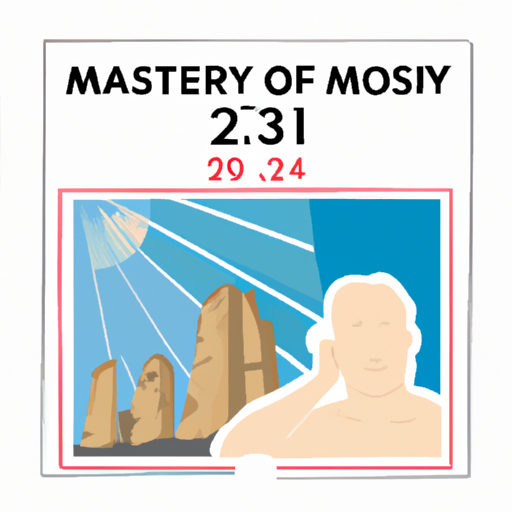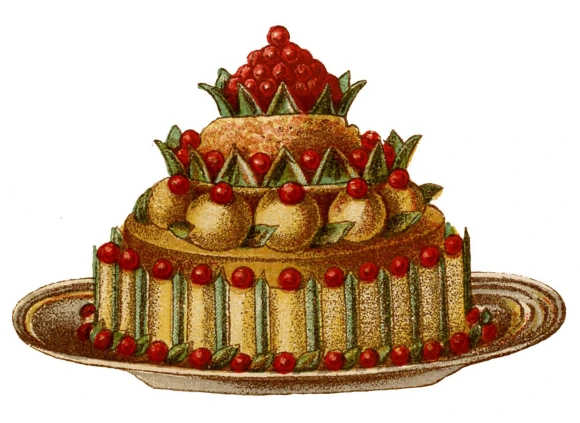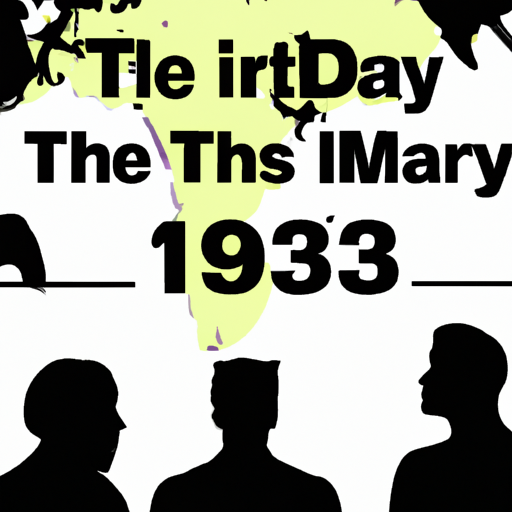The History of Women Vikings: Can a Girl Truly Be a Viking?
The annals of time have long been filled with tales of awe-inspiring women who have played an integral role in society, from the days of the Norse sagas to modern times. But can a female be a Viking? To answer this question, we must delve deep into history and uncover the secrets these powerful women held.
In ancient Scandinavia, Viking women were respected for their strength and courage. They were often seen as equals to men and could even own property or become leaders of their own households. However, it was not common for them to take part in raids or other forms of warfare. Instead, they focused on more domestic activities such as weaving, cooking, and raising children.
Viking women also had an important role in religious ceremonies and rituals. They were viewed as spiritual guides who could provide comfort and guidance during difficult times. In addition, they could play a key role in deciding matters of law and justice within their communities.
Today, there is no definitive answer as to whether or not a woman can become a Viking warrior. Still, many enthusiasts believe that it is possible for females to take part in raiding parties if they are properly trained and equipped with weapons and armor; after all, Viking women were known for their bravery and strength during battle!
No matter what your opinion on whether or not a female can be a Viking may be, one thing remains certain: these incredible ladies have left an indelible mark on history with their courage, strength, and wisdom!
Introduction
A puzzling query arises: can a female be a Viking? The response is intricate. In the past, Viking civilization was exceedingly patriarchal; thus, women were not allowed to partake in the raids and battles for which Vikings are renowned. Notwithstanding this, there are records of women engaging in other essential duties in Viking society, such as being property holders, merchants, and artisans. Moreover, some archaeological data imply that female warriors may have been present in Viking society too. All things considered, while it may not have been prevalent for a woman to be a warrior during the Viking Age, it was definitely feasible.
– The Historical Significance of Female Viking Warriors
A mysterious, often-forgotten part of history lies in the tales of female Viking warriors. In days gone by, it was thought that only men fought in battle, yet archaeological discoveries and ancient accounts have revealed otherwise. This article will explore the significance of these women and their effect on Norse society.
In the 8th century, shieldmaidens began to appear in Scandinavia, renowned for their strength and bravery on the battlefield. These women were mentioned in sagas of the time, proving they were seen as equals to their male counterparts.
The presence of female Viking warriors was not only significant for its impact on Norse society at the time, but also for its implications on gender roles throughout history. These courageous women defied traditional gender roles by joining men in battle – a previously unheard-of occurrence.
By studying these stories and archaeological evidence, we can gain an understanding of life during this period and how important women were to Viking culture. Female Viking warriors demonstrate that even when faced with adversity, women can still be influential members of society.
To summarize, female Viking warriors had a huge influence on Norse culture and gender roles throughout history – a fact made evident through their inspiring stories and archaeological evidence.
– Exploring the Role of Women in Viking History
The Viking Age is often observed as a narrative of male domination, with tales of valiant warriors and daring seafarers. Yet, recently unearthed archaeological discoveries have uncovered a more intricate story of the Viking world, one where women had a noteworthy part. By inspecting artifacts and ancient manuscripts, we can gain insight into the lives of Viking ladies and their influence in society.
In Scandinavia during the Viking Age (roughly 793–1066 CE), women were responsible for managing households and rearing children. Additionally, they had considerable rights when it came to marriage, divorce, and property ownership. Women could own land, acquire wealth from their families, and even conduct businesses independently – unlike other cultures at that time where women had little legal rights or economic chances.
Although most Viking women weren’t warriors, there are some records of female combatants in battle. The most renowned example is Lagertha, a shieldmaiden who fought alongside Ragnar Lothbrok in the 9th century CE. Even if this account may be based on folklore rather than truthfulness, it highlights that certain females did fight alongside men in Norse society.
Viking females also had an important role in religion and mythology. Norse mythology features many influential female figures such as Freyja (goddess of love) and Hel (goddess of death). As well as being venerated deities, these characters served as powerful symbols for Viking women who wanted to assert their power within a patriarchal society.
By looking into the archaeological evidence and historical documents, we can uncover a fuller image of how Viking women played out their part in history – from warriors to mothers to religious icons – it’s clear they made considerable contributions to Scandinavian culture during the Viking Age.
– Examining Evidence for Female Viking Participation in Raids and Battles
The past of Viking raids and battles has been a matter of contention for some time, with proof implying that female Vikings may have taken part in some way. Though there is no definite agreement on the level of female engagement, investigating the accessible proof can give knowledge into the job ladies may have played in these exercises.
Archaeological discoveries offer one wellspring of proof for female Viking inclusion. Items like weapons and jewelry discovered in burial grounds and other internment locales give pieces of information regarding the status and exercises of those covered there. For instance, the presence of weapons or protective layer could recommend that the person was a warrior, while gems could show higher social standing. Moreover, late hereditary testing has uncovered that numerous remains recently thought to be male were really female. This shows that ladies were bound to be warriors than beforehand accepted.
Composed records from this period are another potential source of data about female Viking contribution in raids and fights. Records from current onlookers every now and again notice Viking ladies who battled close by men or drove their own powers into fight. In certain cases, these ladies were even given titles like “shieldmaiden” or “warrior sovereign” to demonstrate their high rank and aptitude as contenders.
Moreover, assessing artworks from this period can give pieces of information concerning how female warriors were seen by society all in all. Numerous works delineate legendary figures like Lagertha – a shieldmaiden said to have battled close by Ragnar Lothbrok – utilizing weapons and driving troops into fight. Different pictures show ladies riding steeds or cruising ships, proposing they were dynamic members in Viking culture instead of latent bystanders.
At long last, while it is hard to decide precisely how much commitment female Vikings had in raids and fights during this period, examining accessible proof can help us comprehend their jobs inside Viking society more clearly.
– Investigating Gender Roles in Viking Society
Exploring the intricacies of Viking society and its relation to gender roles is an imperative venture. During the Viking Age (c. 790-1100 AD), Norse culture was highly stratified, with men assigned as warriors and women typically responsible for domestic tasks such as cooking and childcare. Women were also known to have considerable influence in legal affairs and could own property or make wills. Despite this, there have been discoveries that female Vikings had a more active role in society than initially thought; archaeological findings point to some women serving as warriors or traders alongside men, and even holding positions of power within their communities as chieftains or rulers. This could indicate that Viking society may have been more egalitarian than originally assumed, with both genders playing essential parts in the community. In summary, it appears that gender roles played a critical role within Norse culture during the Middle Ages, although men generally held higher positions of authority while women still had a significant impact on their culture and economy.
– Analyzing Ancient Texts to Understand the Status of Women in Viking Culture
The 8th to 11th centuries saw a culture that placed an emphasis on war, exploration, and trade, with the Viking people at its heart. While much is known of their daily lives and impact on society, comprehending the status of women in Viking culture is a challenge. Consequently, researchers have turned to ancient texts such as sagas and other written accounts for insight. By examining these writings, historians can gain an understanding of how women were perceived by Viking society and what roles they played.
In sagas featuring strong female protagonists who take on traditionally male roles such as defending homes or leading expeditions, it is clear that Viking women had the potential to be powerful figures in their own right and were respected within society. Additionally, many sagas portray women as wise advisors or counselors who provide valuable advice to leaders and settle disputes between clans; this suggests that Viking women had an integral part in decision-making processes within their communities.
Furthermore, laws related to marriage, divorce, inheritance rights, and other legal matters reveal that Viking women had more control over their marital destiny than previously thought; for instance, some sources suggest that a woman could initiate a divorce if her husband was unfaithful or abusive. Records also show female property owners who inherited land from their fathers or husbands; indicating that Viking women had the same right as men when it came to owning property.
By analyzing ancient texts such as sagas and legal documents related to marriage and property rights, scholars can gain a deeper appreciation of the status of women in Viking culture. Through this research we can see that while traditional gender roles still existed during this period of history, Viking women could be influential figures within their communities and had certain rights when it came to marriage and owning property.
conclusion

The past speaks volumes, and it appears that female Vikings did exist and had a significant place in Norse civilization. Whether or not a girl was able to join the ranks of Viking warriors is uncertain, yet there is proof that they were allowed to partake in similar actions as the male Vikings, for example sailing and trading. Thus, it can be assumed that while women weren’t common among the raiders, they were still involved in many facets of Viking life.
.
Some questions with answers
Q1: Can a girl be a Viking?
A1: Yes, women could become warriors in Viking society.
Q2: What is the historical evidence for this?
A2: Archaeological evidence suggests that women fought alongside men in battle and there are also many references to female warriors in Norse sagas.
Q3: How did Viking society view female warriors?
A3: Female warriors were respected by their male counterparts and were seen as powerful symbols of strength and courage.
Q4: Were there any other roles for women in Viking society?
A4: Women had important roles in Viking society beyond being warriors. They were responsible for running households, raising children, and managing farms.
Q5: Are there any modern examples of female Vikings?
A5: Yes, some modern-day reenactors have adopted a “Viking lifestyle” to honor their ancestors. These individuals may take part in activities such as sword fighting, archery, and sailing.</p






